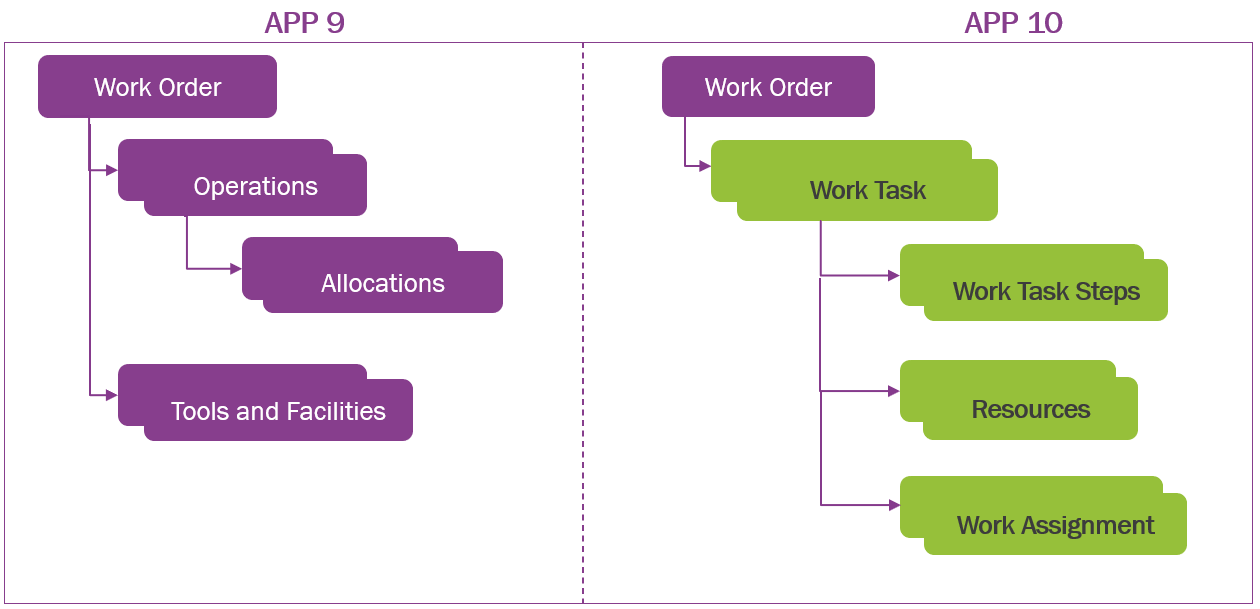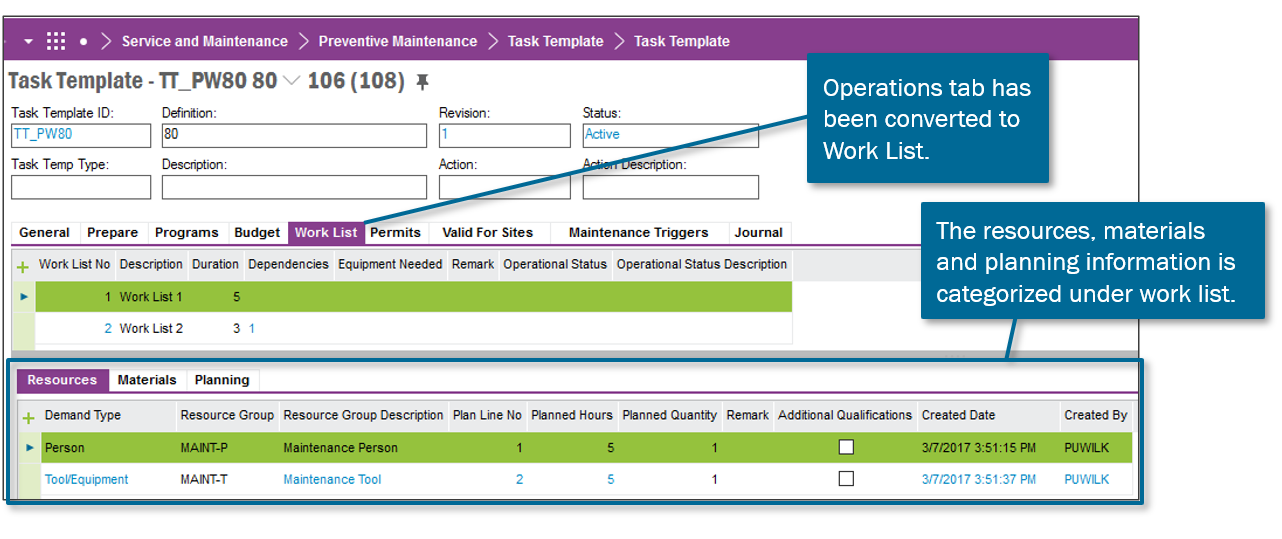I am currently working on starting to build utilization of the jobs and operations of separate standard jobs for the installation side of our company. I am finding that the Jobs/Operations are a bit clunky to work with first off. We will be moving to IFS 10 shortly and I am wondering what is the difference between the operations vs Work Tasks. Will what I create move into there easily, do they function similar? Or am I best off to wait until we move into 10 to turn on this utilization? And if it helps to know we will not be moving into Aurena with this upgrade yet.
IFS 9 Jobs/operations vs IFS 10 Jobs/Work Tasks
Best answer by Thilini Kumarasinghe
Hi,
Kinldy check if below information is helpful.
Operations and Work Tasks:

In App 9 or earlier versions, we have operations.
Work order operations, list the work that is to be performed on a particular work order. If the work order is PM-generated, all planned operations are copied from the PM action to the work order..
Here you can have planning information / create transactions either based on the work order or the operation. i.e. you can report time directly for the work order , or for the operation line. You can issue material connected to the operation line or work order.
You can enter one or several operations for a PM action/Work order. Each operation is identified by a specific operation number. Enter a work description for each operation and information such as maintenance organization, craft, personnel, and time required.
Instead in App 10 version, we have work tasks.
When it comes to App 10, work orders will be there to hold the basic information and no transactions can be performed on the work order itself. All the planning and transaction reporting has to be done on the work tasks itself. i.e you can only plan material and issue material connected to a work task but not to the work order. You can report time for the work task but not for the work order.
- Work order - Defines the requirement or problem, not the fulfilment or execution. It isa non-plannable, non-executable, non-reportable object. It defines a number of defaults for work, that can be overridden per task
- Work Task – It is the planning object. Defines the activities (task steps) required in order to fulfil the requirement.Defines the demands (resource, material etc.) to fulfil the requirement. Collects cost & generates revenue. Manages planning & captures actuals. Holds analytical / fault data for analysis. i.e unlike in App 9, all the actual work is done from the work task itself.
Jobs and Work Task Template:
In App 9 or earlier versions , we have jobs.
You can define standard jobs for the type of tasks that will be executed often or repeatedly, or that requires that a certain standard is followed with regard to what type of craft should be used, what material is required, what type of tool and facility that is required, and what document should be accessible etc.
You can enter work instructions and material requirements and connect documents to both Separate and Route Standard Jobs. In addition, you can enter the following on the Separate Standard Job: operation requirements, tools and facilities requirements, and other expenses related to the task. For both types of standard jobs you can define how all the expenses should be invoiced to the customer (Relevant to IFS/Service Management only).An active Separate Standard Job can be applied to Separate PM actions, Separate Work Orders and Service Requests. An active Route Standard Job can be applied to Route PM actions and Route Work Orders.
In App 9 version jobs separate / route jobs are site dependent.
In App 10 version we have work task templates.
Both separate and route jobs are considered under 1 task template.
You can create a work task template that can be used when you need to plan a number of similar PM actions or to execute a number of similar work orders. A work task template contains information on standard work text (work lists), work steps, resource (person and tool/equipment) demands, material demands required for the job, and which kinds of documents are needed to complete the job. Work Task templates can be used as templates for preparation of PM programs and PM actions as well as templates for preparation of work orders.
The same work task template can be used in one or more sites.
Work task template will have work lists defined which will be later converted to work tasks in the work order.

Upgrade:
When it comes to upgrade, we have several upgrade scripts that can be used to transfer data from previous IFS application versions to App 10 version. But considering the change in the functionalities, we have identified some discrepancies as well. So I feel, if you can wait for App 10 version, then it is good to wait and create the new setups directly in the App 10 version. But if this is not an option, then it is ok to go ahead with creating the setup in any older version since when upgrading, those data will be considered as well. For example, in older versions, I have mentioned that jobs are site dependent and in App 10 it is not, and the jobs will be converted to work task templates and the App 10 work task template ID will have the Job ID + Site ID as well. So you will observe a change in the job ID used in older versions for upgraded data an likewise small changes / introduction of dummy tasks will be there.
Best Regards,
Thilini
Enter your E-mail address. We'll send you an e-mail with instructions to reset your password.




